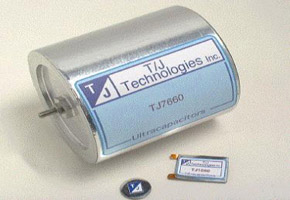Introduction
Ultracapacitors are capacitors that can store so much charge that they are beginning to blur the functional distinction between the capacitor and the battery. Indeed, some of the most impressive ultracapacitors are rated at 5000 farads and are sized just bigger than a half-liter soda bottle. Ultracapacitors have just recently started to show up in products as alternatives to batteries. Theoretically, ultracapacitors have many benefits that make them a potential replacement for batteries. For instance, ultracapacitors can put out much more power for a given weight, can be charged in seconds instead of hours, and can function at more extreme temperatures. In addition, ultracapacitors are more efficient and have a longer lifetime due to the greater number of discharge cycles compared to that of batteries. This makes ultracapacitors ideal for devices that need to be sealed for long periods of time. On the down side, ultracapacitors are still really expensive, and they don't have the energy density of batteries.
To understand how ultracapacitors work, it is helpful to review the basics of how capacitors work. So first, we'll look at the basics of capacitors, then look at how ultracapacitors differ, and finally go over some of the current applications of ultracapacitors in society today. In short, the following topics are considered:


